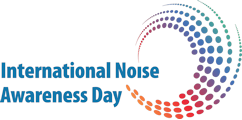impact of noise on a happy, healthy childhood
Noise poses a serious threat to our children’s hearing, health, learning, and behavior. Recent research suggests that quiet promotes a learning environment and gives opportunities for parents and children to enjoy each other’s company. Parents must analyze their own home and recreational activities and make every effort to include quiet times with their children, reading, talking around the dinner table, and listening to their children.
noise and children's hearing
According to the American Academy of Otolaryngology, three million children under the age of 18 have some kind of hearing difficulty. A study by Judy Montgomery in 1990 found that 7% of second-graders, 15% of eighth-graders, and 13% of twelfth-graders and 26% of high school seniors who played in the band had a measurable hearing loss. As early as 1972, David Lipscomb studied 1,000 sixth, ninth, and twelfth graders and found that 3.8% of sixth graders, 11% of ninth graders and 10.6% of twelfth graders failed the hearing screening. A follow-up study by David Lipscomb in 1972 studied the hearing of college freshmen and found that 32.9% of one group and 60.7% in a second group had a measurable high-frequency hearing loss. In a more recent study (1996), the Center for Hearing and Communication found that 10% of ninth graders failed a hearing screening and that these students had never before been identified as having hearing difficulties. Furthermore, their teachers reported that these students exhibited learning and behavior problems in the class.
parenting
Noise-induced hearing loss among children is a serious public concern and impacts on speech, language, cognitive, social and emotional development. The National Hearing Conservation Association reported that in a survey of 110 children, ages six to 14, the average noise level during the day was 90 decibels, about the level of city traffic. On the playground, these levels reached 115 decibels, similar to that of a noisy subway or rock music.
Parents must pay attention to noise exposure in children’s recreational activities. They must listen to toys before purchasing them, encourage children to lower the volume on stereos and noisy computer games, avoid or limit exposure at noisy movies and video arcades, and keep the volume down on personal stereo systems with headphones. If your child is in a school band, discuss the volume with the music teacher and encourage your child to wear hearing protection. Pay attention to the warning signs of a noise-induced hearing loss (ringing in the ears, speech sounding muffled) and if you have any questions about your child’s hearing, discuss it with your pediatrician or licensed audiologist. Remember, that noise-induced hearing loss, though permanent, is preventable. Take steps to preserve your child’s hearing today.
Noise harms our children’s hearing, language acquisition, reading and learning skills, and social interactions. The effects of noise on our children’s development has received too little focus. Parents must make it their business to lower the decibel level in their children’s lives. Continued exposure to noise above 70 dBA over time can cause hearing loss, according to the National Institute on Deafness and Other Communication Disorders (NIDCD). The volume (dBA) and the length of exposure to the sound will tell you how harmful the noise is. In general, the louder the noise, the less time required before hearing loss will occur.
beware
Noisy Toys. Certain rattles, squeaky toys, toy telephones, and musical toys measure over 110 decibels (comparable to power tools). Children play with these toys close to their ears and manufacturers do not warn parents that sounds emitted from toys may be damaging to hearing. Parents must listen to toys before buying them and if the toy sounds too loud, don’t buy it!
Video arcades. Noise levels at video arcades can exceed 110 decibels (the level of factory machinery). Parents should limit their children’s time at these arcades.
Computer games and stereo systems: Children should be cautioned to keep the volume down. Some systems are as high as 135 decibels (the level of a jackhammer).
Headphones and earbuds. Mp3 players and smartphones have been known to produce sound levels as loud as 105 – 110 decibels. Children who listen to music this loud, for several hours a day, face an inevitable hearing loss.
Loud movies. Action movies have the volume turned up well beyond 90 decibels, exposing young ears to exceedingly loud sounds. The message sent out by these loud movies that “loud is cool” is a risky one. Parents should ask movie distributors and theater owners to lower the decibel level.
encourage
Remember that quiet times foster an environment where parents and children can spend time together reading, talking and listening to each other. The Center for Hearing and Communication recommends:
Books. Reading to young children helps develop their reading skills and serves to forge closer relationships between parents and children. Children of all ages should be encouraged to read.
Educational toys. Low-volume, educational computer games, puzzles, construction sets, and card games allow children to learn while playing in quiet, creative settings.
Quiet movies. Family oriented films that focus on warm interpersonal relationships are a nice way to spend time with your children.
Visits to libraries and museums. Quiet outings spent together with family and friends can be a fun way to enjoy the family.
Rule of thumb: If you have to shout to be heard three feet away, then the noise is too loud and is damaging your hearing. Turn down the volume or wear hearing protection.
Read more on noise and children
Check out these additional posts on noise and children:
